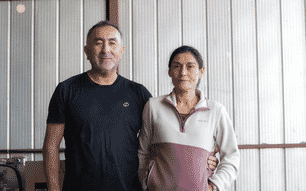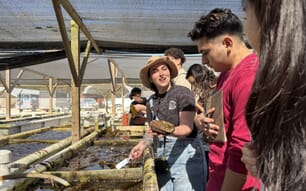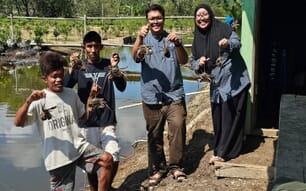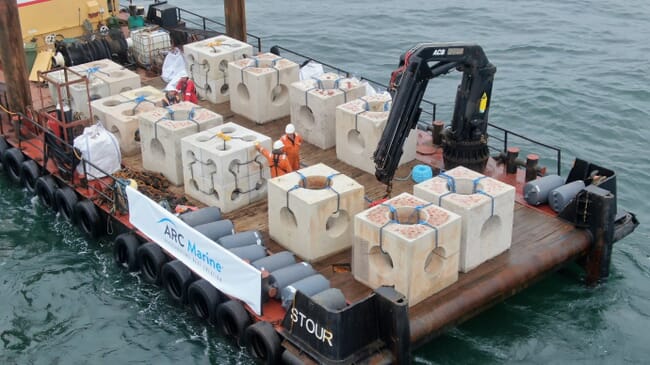
ARC Marine designs, builds, deploys and monitors artificial reefs off the UK coast
Can you briefly describe your aquaculture career?
I came into aquaculture via a contract research facility in Wales (Pontus Research UK) as an aquatic technician, having completed a degree in marine biology. I was very lucky to gain hands-on experience of RAS, the welfare of fish/crustacean species and the business logistics of the aquaculture sector under the guidance of mentors I still rely on today for expert advice.
Since then, I have been working with ARC Marine – an innovative, award-winning, eco-engineering technology company.
What does ARC specialise in and what’s your role with the company?
ARC itself stands for accelerating reef creation. We design, build, deploy and monitor artificial reefs. By utilising our in-house expertise of engineers and scientists we have formulated a replacement cement mix, Marine Crete, with 90 percent less CO2 emissions than standard Portland cement. The manufacturing of Portland cement involves burning calcium at very high temperatures, which is responsible for 8 percent of annual global CO2
emissions.
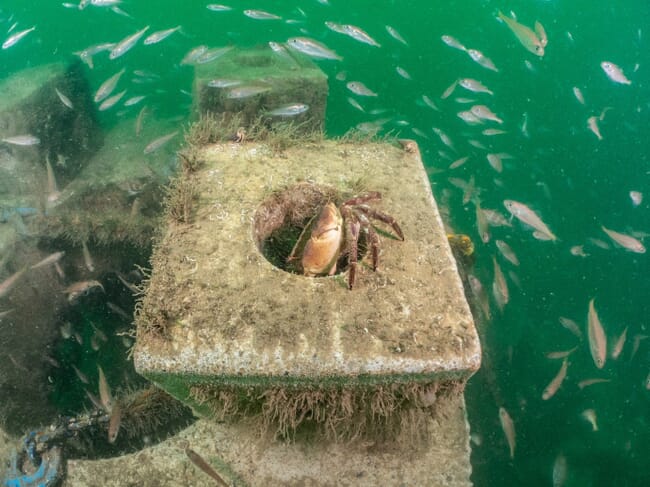
Arc Marine's flagship technology is the Reef Cube, a modular unit with a spherical centre and passageways on each face that facilitate ecosystem development
Our flagship technology is the Reef Cube, a modular cuboid unit with a spherical centre and passageways on each face, which creates complex habitats for fish and sessile organisms. These habitats form a fully functioning ecosystem and can be used as nurseries, refuge and feeding grounds. The complexity of the structures promotes settlement by native species, including mussels.
For those in the aquaculture industry, Reef Cubes provide an environmentally-friendly method to help boost biodiversity, while helping companies to meet environmental targets.
My role as business development manager and in-house marine biologist is to guide industries with a requirement for marine infrastructure through nature inclusive design. It’s an incredibly exciting sector to be working in right now and I see a plethora of benefits to the aquaculture industry in using these reefs.
What percentage of ARC’s work relates to aquaculture and is this likely to change?
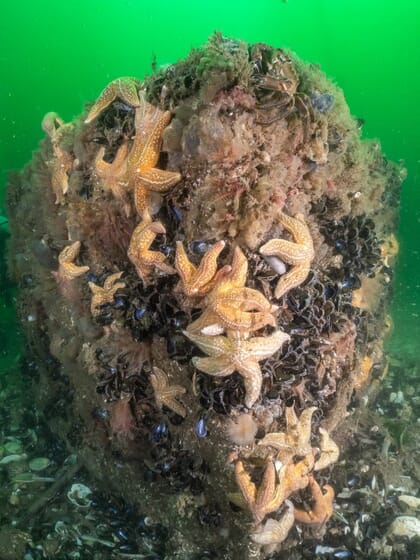
Reef Cubes are being used as eco moorings for a number of seaweed and bivalve sites in the UK
Currently, about 40 percent of our work comes from aquaculture moorings and the volume of orders from aquaculture is due to growing exponentially. Our Reef Cubes are used as eco moorings for a number of seaweed and bivalve sites and farmers are realising the potential for bespoke nature-based solutions to mitigate the environmental impacts.
We have projects due for deployment in Cornwall, Wales and internationally.
What’s special about the Reef Cube design?
Reef Cubes are built to promote native flora and fauna by providing structural complexity. They dissipate wave energy and are designed to provide scour protection, and as a safeguard against bottom trawling. They also have potential to be used in coastal defences and offshore energy.
Can you give a brief overview of the REFAS project?
The REFAS project looked to see if introducing Reef Cubes adjacent to a scallop farm based in Torquay would enhance lobster and brown crab populations. Over the initial observation period, positive trends have already emerged for these species, and we continue to monitor the site.
The initial results found a higher total species than the adjacent sandy area, a higher abundance of fish, cephalopods, spider crabs, as well as rapidly colonising native epifauna. Of particular interest were the juvenile commercially sensitive species such as whiting, pouting and cuttlefish, as well as threatened species such as poor cod and catshark eggs. Potentially suggesting REFAS is being used as a nursery ground.
What did you learn from the pilot project that preceded REFAS and how do you hope to build on this?
The pilot project helped develop ARC Marine’s methods to plan, build and deploy Reef Cube technology for optimum habitat value, while bridging the gaps between fishermen and aquaculture managers by forming a consortium of these local stakeholders.
Not only did it develop our understanding of the Reef Cube technology but it also demonstrated that stakeholders from all sides of the table can come together when their goals are aligned on commercial, environmental and sustainability objectives.
Are there other species/production systems you see as working well in conjunction with Reef Cubes?
In collaboration with Marine Biological Association, we have demonstrated the ability to successfully transplant adult native oysters onto Reef Cubes with no statistical difference in survivability in an RAS facility – which provides a useful proof of concept.
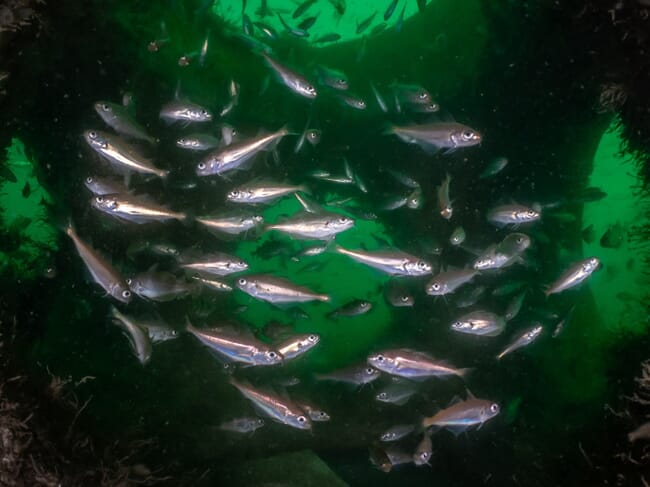
Initial results from the REFAS project showed that the Reef Cubes hosted a a higher number of marine species than the adjacent study area
Whilst Reef Cubes are our flagship product; we have also developed products such as Marine Tiles for retrofitting to structures such as sea walls as well as marine armour to replace coastal rip rap [a form of interlocking coastal defence] so that ports and historically barren coastal defences can be renewed with life. Although these products provide benefits in themselves, We are now building upon this technology with the same process and mentality applied to the REFAS projects regarding how this can provide opportunities for further collaboration between stakeholders.
How sustainable/economical is it to rely on man-made structures such as Reef Cubes to help increase marine biodiversity?
As development in the marine environment continues the industry is under constant pressure to reduce its environmental impact. Our technology provides a long-lasting and therefore economical way to restock our oceans and reverse the impact of bottom trawling and climate change for generations to come.
Our Reef Cubes could remain for up to half a century, providing a rare opportunity to give something back to the marine environment and improve biodiversity, both now and in the future.
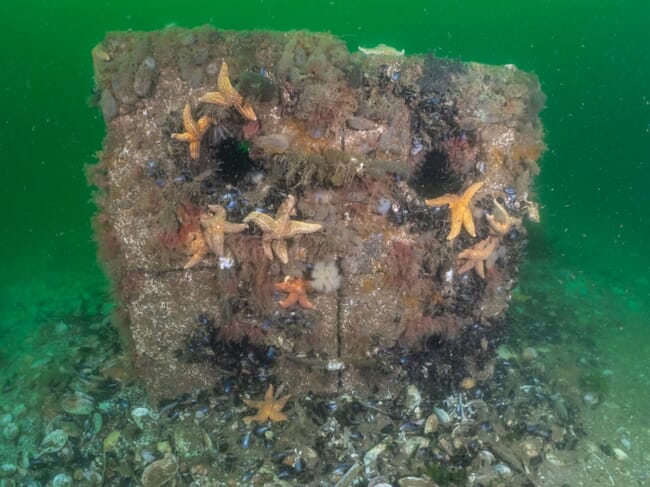
REFAS 2 found that Reef Cubes can promote the growth of other commercially valuable species and could help to produce multitrophic sites
How do you see ARC’s involvement with the aquaculture sector evolving in the coming years?
What we have shown through REFAS 2, is that Reef Cubes can promote the growth of other commercially valuable species, and – should they be deployed at a big enough scale – they could help to produce multitrophic sites where aquaculture farms can gain revenues from wild crustaceans and shellfish. Alternatively, they could help to promote bioremediation around fish farms through encouraging the settlement of bivalves near the sites.
What sort of feedback have you had from the aquaculture industry to date?
It’s been overwhelmingly positive, once people understand our products. We have mainly been interacting with bivalve and seaweed producers to date, but we plan to start discussions with salmon farmers soon too.


